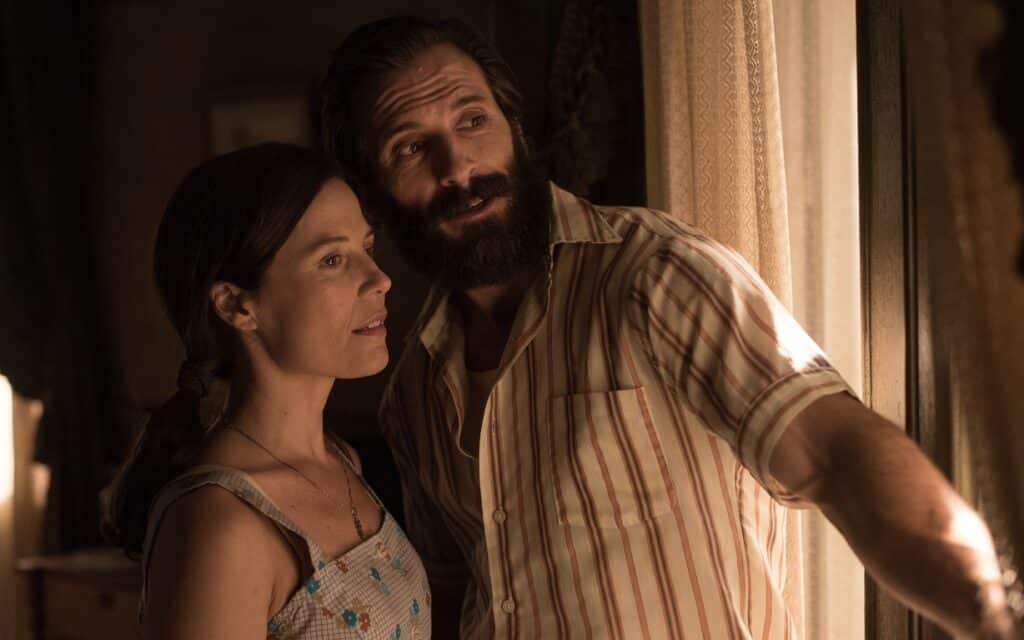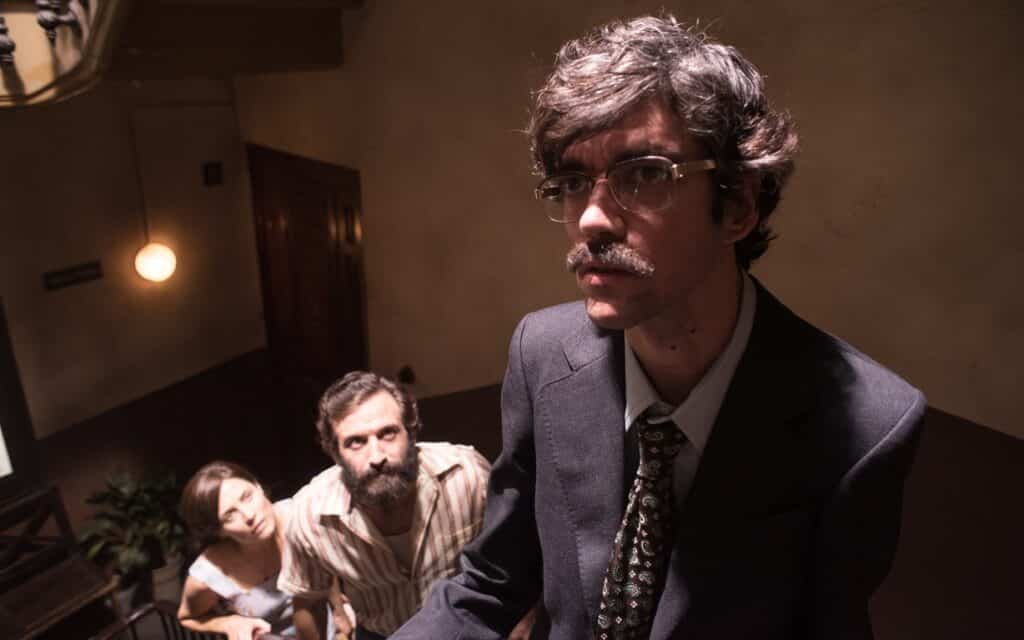Read also:
How to Watch FX Live Without CableHow To Watch AMC Without CableHow to Watch ABC Without CableHow to Watch Paramount Network Without CableThe Shudder exclusive moves from promising to prosaic to problematic in its runtime.
It’s been about seven months since the COVID pandemic began. For many city dwellers, that’s meant being trapped in our apartments. What used to be our refuge turned into a prison; we fear leaving our apartments but feel trapped in them. This makes a horror movie set primarily in an apartment seem almost too apt. 32 Malasaña Street (sometimes titled Malasaña 32), directed by Albert Pintó and released in the US exclusively on Shudder, is a ghost story almost entirely set in one apartment, a setting which may hit too close to home for many viewers.
Like many ghost stories released over the last decade (The Conjuring series coming immediately to mind), this one claims to be based on a real story – though I haven’t been able to find any English accounts of the inspiration.
The stage is set in 1972, where two young brothers find a woman dead in her Madrid apartment. Four years later, seeking a better life for themselves and their family, Candela (Bea Segura) and Manolo Olmedo (Iván Marcos) move their family from a small village to Madrid, taking up residence in the dead woman’s apartment. Selling everything they have to secure a spacious flat, the parents move in with their blended family.
The couple have two children, the teenage Pepe (Sergio Castellanos) and primary school aged Rafael (Iván Renedo), as well as Candela’s daughter, Amparo (Begoña Vargas), and Amparo’s grandfather, Fermin (José Luis de Madariaga). Candela and Manolo set immediately to work in order to afford the new apartment, leaving Amparo to care for Rafael and her grandfather. From the start, a creepy occurrence sets Amparo and her grandfather on edge: doors slam shut and lock, telephones ring even though they don’t have service, and phantoms move through the house, just out of plain view. These paranormal events culminate in Rafael’s days-long disappearance.

After Rafael disappears, the rest of the family catches on that this apartment may be haunted. Pepe corresponds via notes sent on clothesline with a mysterious Clara, and when a note says she knows where Rafael is, he goes to the basement to meet her. In the basement, the power goes out, and Pepe is molested and attacked by a spirit. A few days later, Amparo finds Rafael locked in a clock in a next door apartment. The family, now convinced they’re new home is haunted, is unable to move out as they are left completely broke by their move. The family realizes they have to find a way to help their ghost move on.
32 Malasaña Street starts off with a lot of promise. The movie opens with two brothers fighting over a marble, which falls down the stairs in front of an eerie apartment door. As one brother goes to retrieve it, the ball continues rolling into the apartment as doors open, leading the boys further inside. Light streaming through doors and windows creates a creepy interplay between light and shadow, that builds atmosphere and tension as the terrified boys move along to find the dead woman, who’s obviously been dead for some time with no one realizing it.
A person being dead in an apartment with no one noticing is a common fear among urbanites. And as we are introduced to the Olmedo family, it seems that the horrors of city living will be the primary source of fear for the film. The family has to deal with the realities of poverty, having to gamble everything on moving to the big city with no recourse if their dream fails, highlighting the economic fear instilled by capitalism. The only interaction between the Olmedos and their neighbors is Pepe’s notes sent by clothesline with Clara, underscoring the isolation we feel in cities, even when we’re surrounded by millions of people.
But then the movie starts to feel like a retread of the same old ghost movies we’ve been watching for the last three-plus decades. The movie abandons the urban horror for the tired ‘vengeful spirit’ trope and becomes an almost-remake of Poltergeist.
The movie starts to feel like a retread of the same old ghost movies we’ve been watching for the last three-plus decades.
Not only do we have a young child being spoken to by a ghost via television, who is absconded then returned, there’s an older woman wearing large glasses who serves as a medium to help the family get rid of the vengeful apparition. The film also floats the idea that the family is being punished for their sins, similar to how Jack is haunted in The Shining. But the family’s backstory is so poorly set up the family’s connection to the ghost is more confused than clear.
This is all a shame, because there is some real talent in the production. The acting is excellent, with Begoña Vargas carrying the show. Early on, she brings empathy to Amparo’s character, adroitly playing a young woman who loves her family, yet feels hindered by them. Iván Marcos doesn’t make it seem like Manolo is refusing to leave the house due to stubbornness but due to financial constraints, a rare motivation for a man in a haunted house film. Again, it’s too bad the audience doesn’t have the insight into the character’s backgrounds to help appreciate the actors’ performances.

Daniel Sosa’s cinematography is consistently atmospheric and eerie, and makes the apartment expand and contract: one minute feeling airy and spacious, the next like a prison. Frank Montasell and Lucas Peire’s music suits the film well, and while it may not get stuck in your head, it perfectly sets the tone for each scene. And the fact that director Albert Pintó doesn’t rely exclusively on jump scares, and opts for a slow build up to the terror is refreshing. Though in the end, the movie just feels poorly paced, and drags in far too many places.
Despite a good cast and some great production elements, 32 Malasaña Street just doesn’t live up to the heights it sets up for itself. Rather than try to explore the horrors of city life, it retreats to the tried and true tropes of familial dysfunction to find its scares.
Based on the numerous “inspired by real events” ghost stories we’ve seen released over the years, this movie will definitely have its audience, but it’s doubtful 32 Malasaña Street will make a splash outside those hardcore horror fans. Moreover, the final twist, while surprising, is definitely problematic (and veers disquietingly towards some heavy transphobia), and ultimately stops the film from being something you should seek out.
32 Malasaña Street streams on Shudder Thursday.